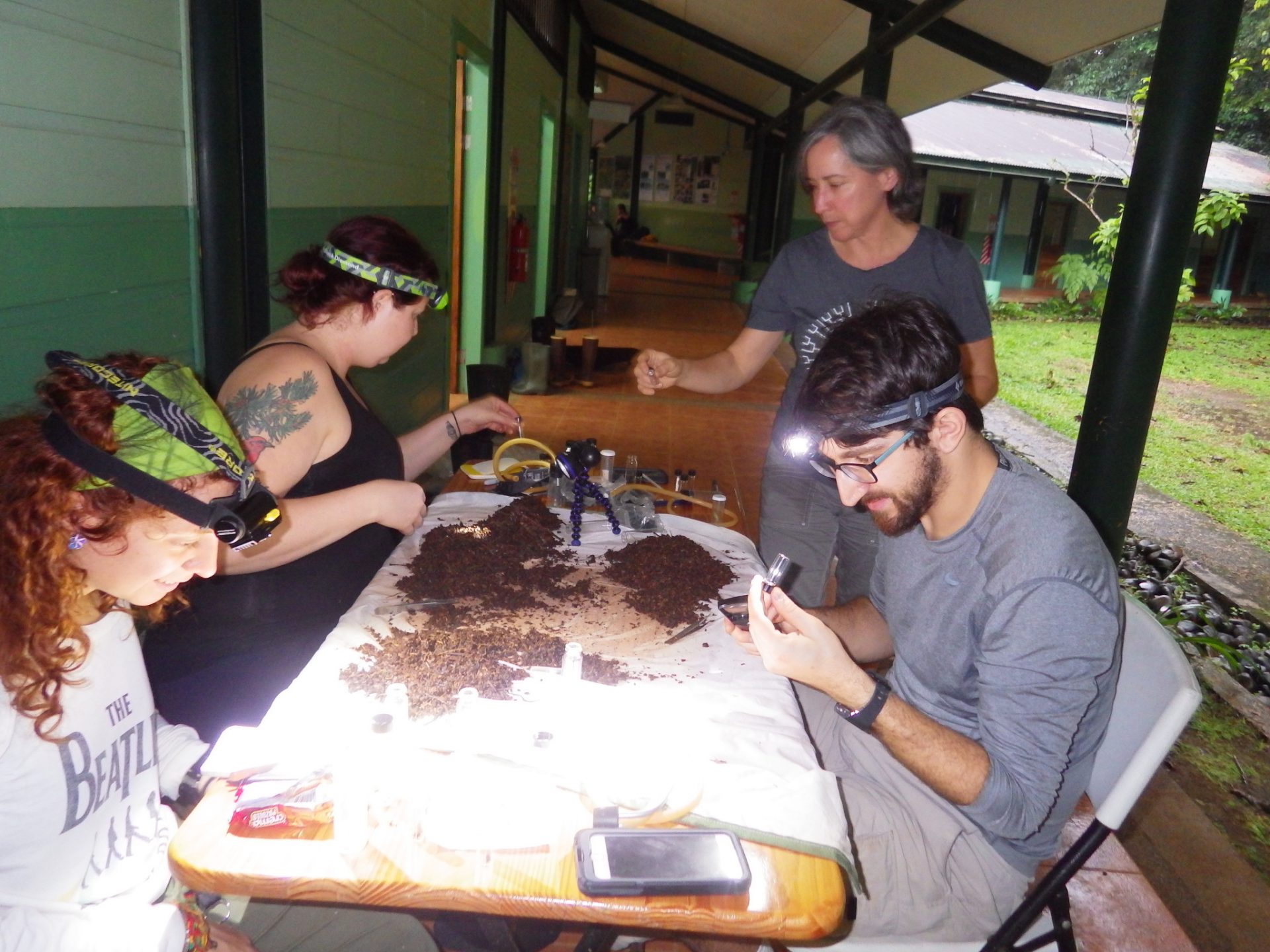
While many students and faculty spent their winter break relaxing with family and friends, Biology Professor Greta Binford and Julie Oatfield ’17 were in Costa Rica, studying arachnids with a group of professors and students from around the world
Binford and Oatfield were studying on a program put on by the Organization for Tropical Studies, a consortium based in Costa Rica that provides opportunities for biology education and research around the world.
This specific program focused on the ecology and evolution of arachnids, a subject that both Binford and Oatfield are quite passionate about.
“We’re still discovering a lot of the key internal morphology, but also external morphology that’s involved in sensory systems [in arachnids],” Binford said. “We’re still discovering really basic aspects of it, which is a lot of what makes arachnology fun – there’s still so much to discover.”
Morphology is a branch of biology that deals with the form of living organisms, and with the relationships between their structures.
The program was led by five faculty professors, including Binford. Each professor represented a different part of arachnid ecology and evolution. Binford studies venom, while other professors focused on animal communications, ultra-structures, spider webs, and biodiversity.
“The team of faculty was really great, and so we’d sit around over dinner and talk about unanswered questions and biology and how we might be able to answer them using arachnids,” Binford said. “So the students got to participate in those conversations.”
Oatfield especially appreciated the high quality of the professors on the program.
“[The] professors were like top-notch pioneers in the field, so I kind of felt like I was in one of those movies where it was like chock-full of A-list celebrities,” Oatfield said.
The program took place at a field station in Costa Rica called “La Selva.” The two-week-long program focused on teaching students skills that they can continue to use in their biological research.
“The goals are to take students and… really immerse them in arachnid diversity and the biology of arachnids, and to help them practice framing questions around arachnids, about any aspect of arachnids really, and then help them figure out how to craft projects where they can collect data to help to answer their questions,” Binford said.
The program was geared toward graduate students, but any undergraduate students who were qualified were encouraged to apply. That’s how Oatfield found out about the program, through an email forwarded to her by Binford.
“I didn’t pay much attention to it at first, but then I remembered that there had been arachnids mentioned in some email, and I was like, ‘Oh, maybe that’s what I’ll do over my winter break.’ It was a really weird, tiny opportunity,” Oatfield said.
There were 13 students on the trip, and five professors, so students got a plethora of one-on-one support from professors while working on their research projects.
“Being able to share that with students and open their eyes to what’s there, if you just look a little more closely, is really fun,” Binford said.
Students could either develop their own research projects or work on those developed by professors, collecting specimens, running in-nature experiments and doing dissections for the majority of the two-week period.
“Some students had things that were like almost publishable,” Oatfield said. “That was a huge part of this research thing. Some of the work you did through professors, they were going to publish soon, and you might get an acknowledgment, so it’s kind of exciting.”
This year was the second iteration of the arachnid trip, and Binford is already planning for another round in three years. Oatfield’s advice to interested students?
“Read random emails to get random opportunities, because you never know what’s gonna be super cool!”
Subscribe to the Mossy Log Newsletter
Stay up to date with the goings-on at Lewis & Clark! Get the top stories or your favorite section delivered to your inbox whenever we release a new issue.

Leave a Reply